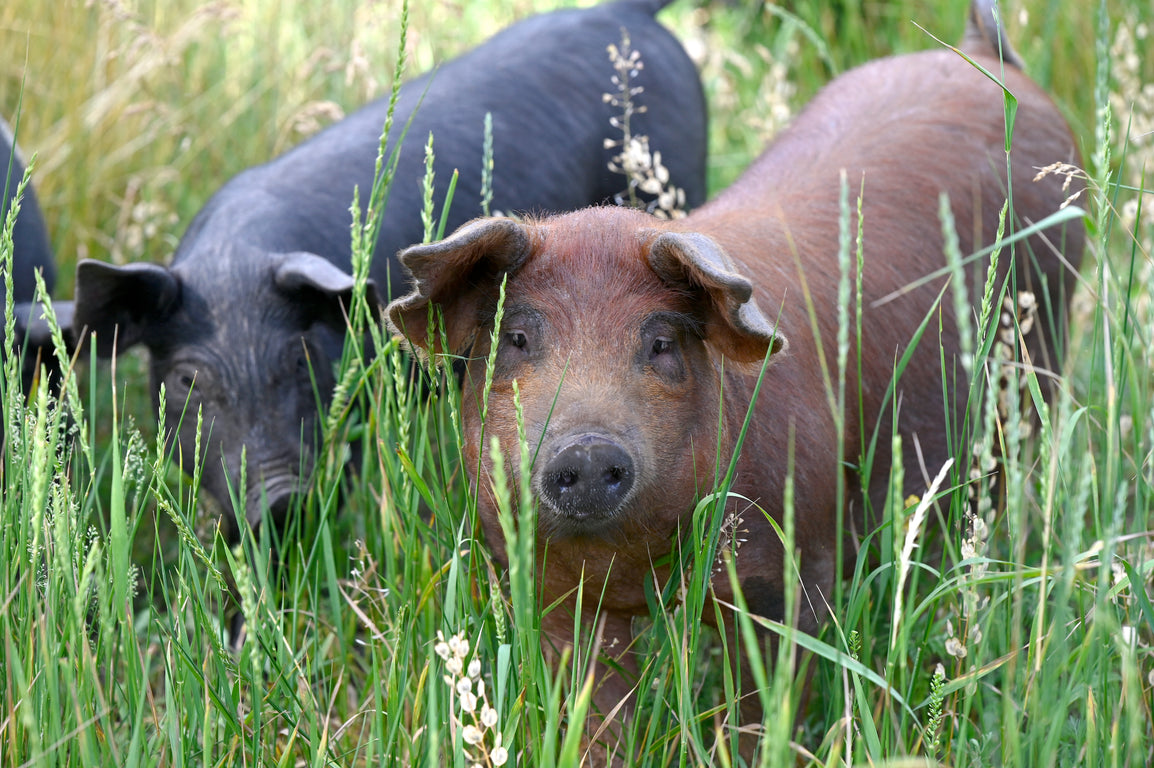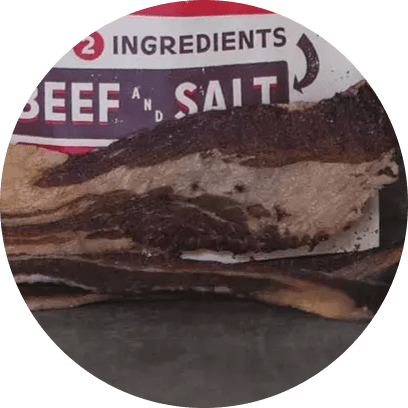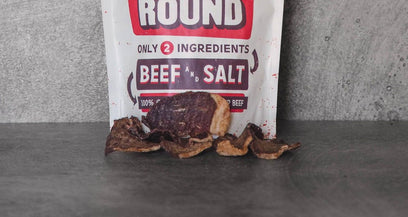THE CARNIVORE DIET BENEFITS




Whether you’ve been introduced to regenerative farming through the Carnivore Snax brand or you’ve been made aware of this revolutionary practice elsewhere, you may be wondering…does regenerative agriculture really work?
It sounds great in theory. Any steps we can take toward restoring our lands and promoting a more sustainable, reliable food supply chain are worth taking. And if human health and happiness are improved along the way? Even better.
Nevertheless, many still have doubts as to whether the impact of a world reliant solely on regenerative farms is worth the work that goes into making this vision a reality. That’s why today, we’re going to take a detailed look into the facts to explain why - yes, regenerative agriculture really works.
Below, you’ll learn how the techniques that go into regenerative farming contribute to less atmospheric carbon emissions, better yields, healthier food, and happier farmers/communities. These are just a few of the profound benefits of regenerative ag. Let’s get to the root of the conversation by explaining all the reported benefits of regenerative agriculture.
A Brief Introduction to Regenerative Agriculture: What is it, Benefits, and More
Before we can unpack the science behind regenerative farming and explain why it works, we need to provide a bit of context for those who are new to this topic. What is regenerative farming, exactly? Our complete guide is a great starting point. But really, all you need to know for the sake of this conversation is that this approach to farming employs more natural, sustainable techniques to raise or grow food.
The overarching goal of regenerative farming is to get back to practices our ancestors would have used - and stray away from commercial farming tactics like heavy fertilizing, aggressive pesticide use, constantly tilling the soil, etc.
Instead, with regenerative farming, the focus is placed on improving soil health, biodiversity, and ecosystem services, all with the goal of producing food in a sustainable way. It's like taking care of the lands and producing delicious food at the same time! Some techniques farmers use include rotating crops, cover cropping, reduced tillage (or even no tillage at all), rotational grazing, and more.
We’ll talk more about how regenerative agriculture works later on. But now - let’s pivot the discussion to get to why regenerative agriculture is important. The practices we described above - along with the many others that regenerative farmers use - contribute to healthier soil, more diverse ecosystems, and a more sustainable food supply chain.
Our food tastes better, and the process of creating it is less impactful on our lands. What’s more, these types of farms involve healthier conditions for those who work in them. And, regenerative farming creates a more inclusive, diverse system for all individuals.
All of that sounds great, right? But maybe you’re not quite convinced. Does regenerative agriculture really work? Yep, it does. And here’s why…
Does Regenerative Agriculture Really Work? Yes - and Here’s Why…
There’s a reason you’re hearing more and more about regenerative agriculture: we’re witnessing its impact on our lands in real time! There are a few telltale signs that regenerative agriculture works - and we’ll highlight those for you below to prove our point.
How it Improves Soil Health
Most of the benefits of this type of farming can be attributed to the enhanced emphasis on caring for the soil. Practices such as crop rotations, cover cropping, and reduced tillage improve soil health by increasing organic matter, improving soil structure, and enhancing soil fertility.
These practices help to create a rich and healthy soil ecosystem, which supports the growth of crops with higher nutrient levels, fewer pests, and less reliance on chemical fertilizers and pesticides.
By improving soil health, regenerative agriculture helps to reduce erosion, promote water infiltration, and enhance soil biodiversity. This leads to better plant growth and yields, which translates into better food production. And that’s just the beginning for regenerative agriculture…
How it Increases Biodiversity
Biodiversity refers to the variety of living organisms in a particular ecosystem. A more biodiverse ecosystem is one that’s more resilient to environmental stressors such as drought, flooding, and extreme temperatures. And as we’re witnessing more extreme weather events, it’s clear to see why this matters so much. Fortunately, this is another successful outcome of regenerative ag.
Some of the practices that go into this style of farming - including intercropping, agroforestry, and polyculture - increase biodiversity by providing habitat and food for a variety of organisms, from soil microbes to pollinators to larger wildlife.
By promoting biodiversity, regenerative agriculture helps to reduce the risk of crop failure, maintain healthy soil, and support a healthy ecosystem that can provide other benefits - such as pest control, soil fertility, and pollination. One example of this in our world today is the increased focus on bee conservation.
All of this is to say that by increasing biodiversity, regenerative agriculture helps to create a more resilient food system that can adapt to changing conditions, while also supporting the long-term health and well-being of our lands. Food shortages are less likely to occur. That alone is reason enough to strive towards this type of farming!
How it Reduces Carbon Emissions
This particular benefit is perhaps the most important for restoring our lands. In fact, we recently wrote an entire article on how regenerative agriculture sequesters carbon to drive this point home. The tactics used on regenerative farms seek to sequester carbon emissions deep into the soil rather than allowing them to make their way up into the atmosphere, where they can wreak havoc and slowly but surely destroy our ozone layer.
How does this happen, though? The roots of plants in regenerative agriculture systems store carbon in the soil, while trees in agroforestry systems sequester carbon in their biomass.
But the sequestration of carbon is just one way that emissions are reduced through this type of farming. Regenerative agriculture practices also reduce emissions by decreasing the need for fossil fuel-based inputs such as synthetic fertilizers and pesticides. This also leads to healthier, more nutritious food - and better working conditions for farmers.
How it Improves Water Quality
Our water is our most precious resource. And it may surprise you to learn that all the water that will ever exist is here right now - water doesn’t leave earth, and it doesn’t come from space. We can’t get more.
Thus, preserving the quality of the water we do have here now is of the utmost importance. And regenerative farming does wonders in this regard. That’s because the practices that go into regenerative agriculture like buffer strips, conservation tillage, and integrated pest management reduce water pollution. They do this by reducing erosion and pesticide runoff.
By using natural processes to control pests and weeds, regenerative agriculture reduces the need for chemical inputs that can contaminate waterways. Conservation tillage reduces soil erosion and helps to maintain soil health, while buffer strips along waterways help to filter out pollutants and prevent soil erosion.
By improving water quality, regenerative agriculture helps to protect aquatic ecosystems and maintain the health of our water resources. We don’t have to invest as heavily in water treatment solutions or waste nearly as much water as commercial ag practices do.
How it Supports Local Economies
Last but certainly not least, we want to explain how regenerative agriculture actually supports local economies and creates healthier, happier communities. These practices are more labor intensive. Farmers aren’t able to rely on technology or equipment, and thus, this type of farming creates more job opportunities.
Additionally, regenerative agriculture can support small-scale farmers by providing them with a viable alternative to industrial agriculture, which tends to favor larger-scale operations. You’d probably be shocked to learn that there are only four meat processors here in the US. And, the biggest of the four—the biggest in the world—is a Brazilian-owned and operated company that processes one-quarter of the beef in the U.S. and one-fifth of the U.S. pork.
Getting away from these mass-produced, commercialized processes helps encourage economic diversities while improving the quality of our food. By supporting local economies, regenerative agriculture helps to create a more equitable and sustainable food system.
Now That You Know Regenerative Agriculture Really Does Work, How Can You Support it?
There should be no doubt left in your mind - regenerative agriculture works. The only question now is, what’s next? How can you do your part in creating a world that relies solely on these more holistic, healthy practices? We actually wrote a complete guide recently on how to support regenerative agriculture if you want the full scoop. Otherwise, here is some advice on your next steps:
- Learn more: Educate yourself about regenerative agriculture practices and their benefits, and share your knowledge with others. You can talk about the implications of regenerative farming in your friend group, with your family, or with groups you’re a member of in your community. The more people are aware of what’s possible, the greater chances we have of making this vision a reality. A good starting point is our article on the history of regenerative agriculture or the difference between regenerative agriculture vs permaculture.
- Advocate for policy change: Advocate for policies that support regenerative agriculture practices, such as funding for research and education, incentives for farmers, and regulations that promote sustainable farming practices. We need to make it more expensive/difficult for commercial farmers to continue operating the way they do so they have no choice but to adopt these more sustainable practices.
- Support regenerative farmers: This is the best way to go about supporting this practice - hitting commercial farms where it hurts the most, and rewarding those who prioritize your well-being and our lands. Buy food from farmers who use regenerative agriculture practices, either directly from farmers' markets or through retailers that source from regenerative farms.
- Support brands that employ regenerative agriculture practices: Depending on where you live, finding farms to support directly is tough. The next best choice - and something you should do anyways - is to choose brands that prioritize regenerative agriculture in their sourcing and production, like Carnivore Snax. By supporting these brands, you're sending a message to the industry that regenerative agriculture matters. You can rely on our meat chips as a healthy snack sourced 100% from regenerative farms - whether you’re on carnivore diet vs keto, paleo, or simply want a nutritious snack that aligns with your values.
Does Regenerative Agriculture Really Work? Wrapping Things Up
But does regenerative agriculture really work? As you now know after reading this article, it does - 100%. And the sooner our world as a whole adopts this practice and moves away from commercialized farming, the sooner we’ll have restored our lands and made challenges & concerns in the food supply chain a thing of the past.
So at this point, it’s up to you to do your part to raise awareness and support regenerative agriculture in your daily life. Advocate for these techniques in your community, make your voice heard and hit commercial farms where it hurts the most - by spending your money wisely.
If you’re looking for a good starting point, you can’t go wrong with our delicious, melt-in-your-mouth carnivore crisps. These are undoubtedly the best low carb snacks you can get your hands on - whether you’re looking for snacks for carnivore diet or you are trying to eat a high-protein diet in general.
We’ve got ribeye chips, steak chips, lamb chips, beef chips, brisket chips, chicken chips, and pork chips - all sourced from the most elite, ethical regenerative farms the country has. So, take a chance on these pastry-like meat snacks and see what you’ve been missing out on all this time while supporting a more sustainable approach to farming!

























